“Interior of Barracks 17 AA Coy., North Queensferry” – a detective story
The Puzzle
The Artist
The 17th Anti Aircraft Company
The Artist in North Queensferry
Location of the scene
The Puzzle
Some time ago, I found this painting on the IWM website:
“Interior of Barracks 17 AA Coy., North Queensferry” by Harry Bush.
https://www.iwm.org.uk/collections/item/object/4021

Object description
The interior of a barracks with a close up view of a single bed with blankets and bits of military uniform on top of it. There is a window in the left background and the walls are made of vertical planks of wood.
OBJECT DETAILS
Related period: Second World War (production), Second World War (content)
Creator; Bush, Harry
Production date: 1940
Materials: Support: canvas, medium: oil
Dimensions: Support: Height 222 mm, Width 284 mm
Catalogue number: Art. IWM ART 15696
Finding information about the painter was fairly easy, but finding details about the 17th Anti Aircraft Company in North Queensferry was much more difficult.
The Artist
Harry Bush
https://artuk.org/discover/stories/harry-bush-painter-of-suburban-south-london
Harry Bush: painter of suburban South London
by Peter Quartermaine
Harry Bush was born in Brighton, moving to London as a child in about 1898. His father Thomas came from Assington, Suffolk, and was perhaps the descendant of Flemish weavers.
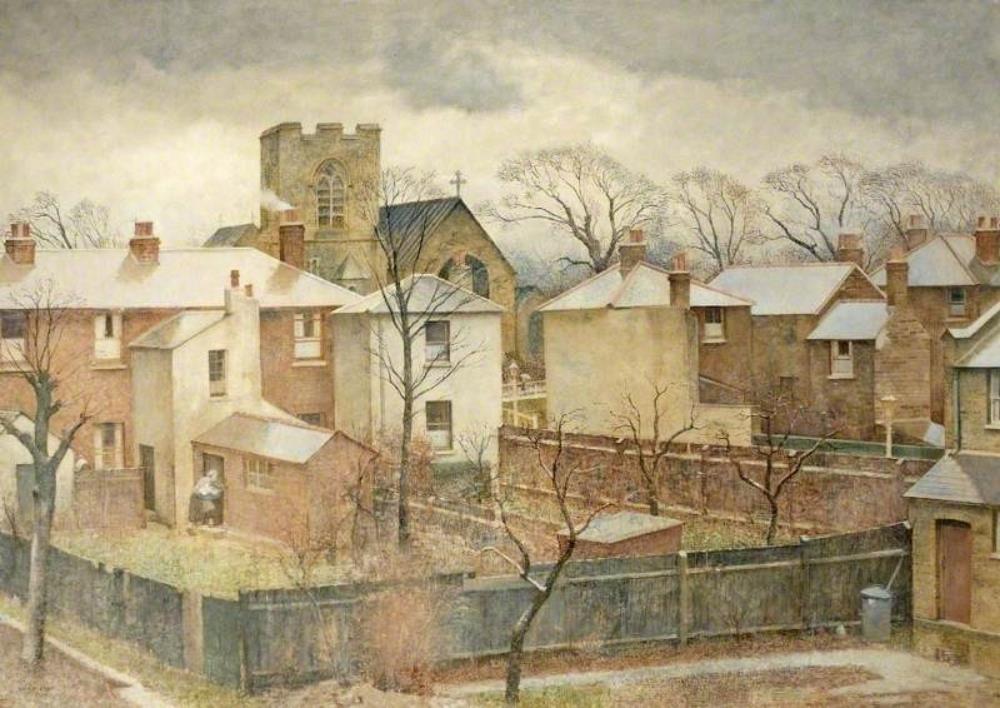
After four years as a copyist at the Admiralty, Harry studied at the commercial Carlton Studio, Chelsea, under Frederick Taylor (1875–1963), RI, and later at Regent Street Polytechnic, where he met the artist Noel Laura Nisbet.

Self Portrait – Noel Laura Nisbet (1887–1956)
They married in 1910, and later shared 6, Stamford Studios, Fulham Road, Chelsea. In October 1914 the Principal of Clapham School of Art, L. C. Nightingale, formally offered the couple admission ‘without fee’ to the school, allowing them ‘to turn up at any time’, though Harry’s war service in Scotland prevented this. During the war Noel moved to Speen, near Newbury, where daughter Janet was born in 1916, and the family may have met the artist Fred Hall as the 1984 Christie’s auction included a painting by him.

Interior of Barracks, 17 A. A. Coy, North Queensferry c.1940
https://www.iwm.org.uk/collections/item/object/4021
The couple would live in the same semi-detached house in Queensland Avenue, Merton (a gift from Noel’s father) from 1914 until their deaths, but while Noel’s work featured imagined scenes (often for book illustrations), over the years Harry regularly depicted the suburban back gardens seen from his studio.
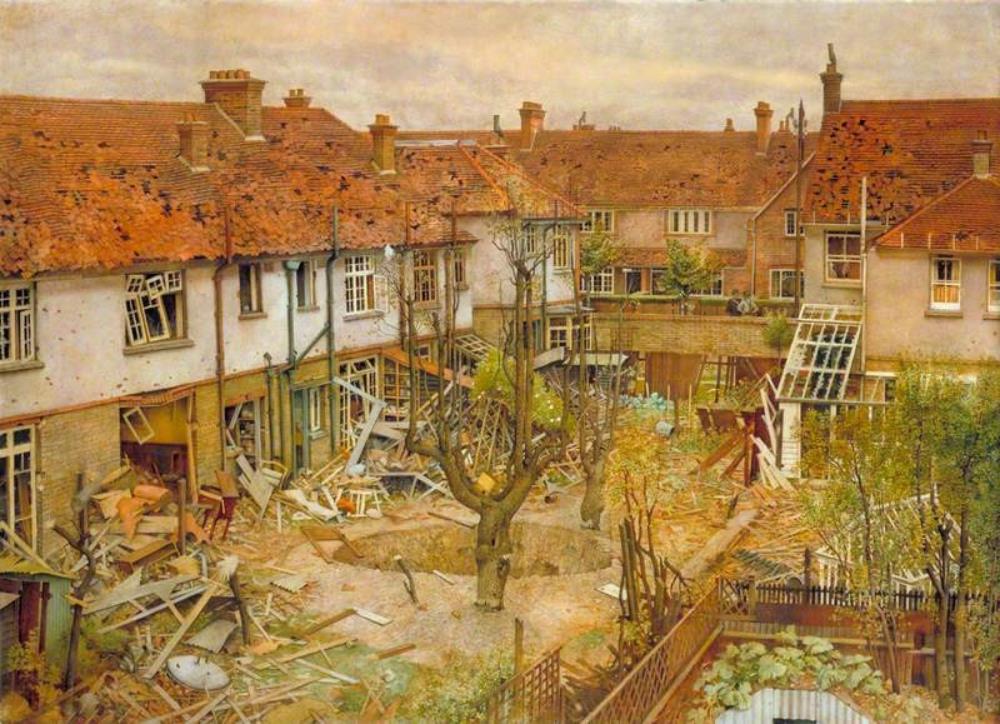
A Corner of Merton, 16 August 1940
He also painted landscapes, portraits and still life studies, but is best known as the ‘painter of suburbia’. In truth, though, he remains largely unknown today: the inclusions of his 1923 painting A February Afternoon and 1940 painting A Corner of Merton, 16 August 1940 in the Tate Britain’s 2004 exhibition ‘Art of the Garden‘ was a rare – and fully deserved – recognition.

During his lifetime Bush’s work was appreciated in art circles for its craft and studied finish; Spring Morning Merton (1932) was exhibited both at the Royal Academy and at the Paris Salon that year and his paintings were shown at the Royal Academy every year from 1922. Purchasers included galleries in Britain and Australia, but regular income was always short for the couple; Harry did occasional art teaching and sometimes took private pupils.
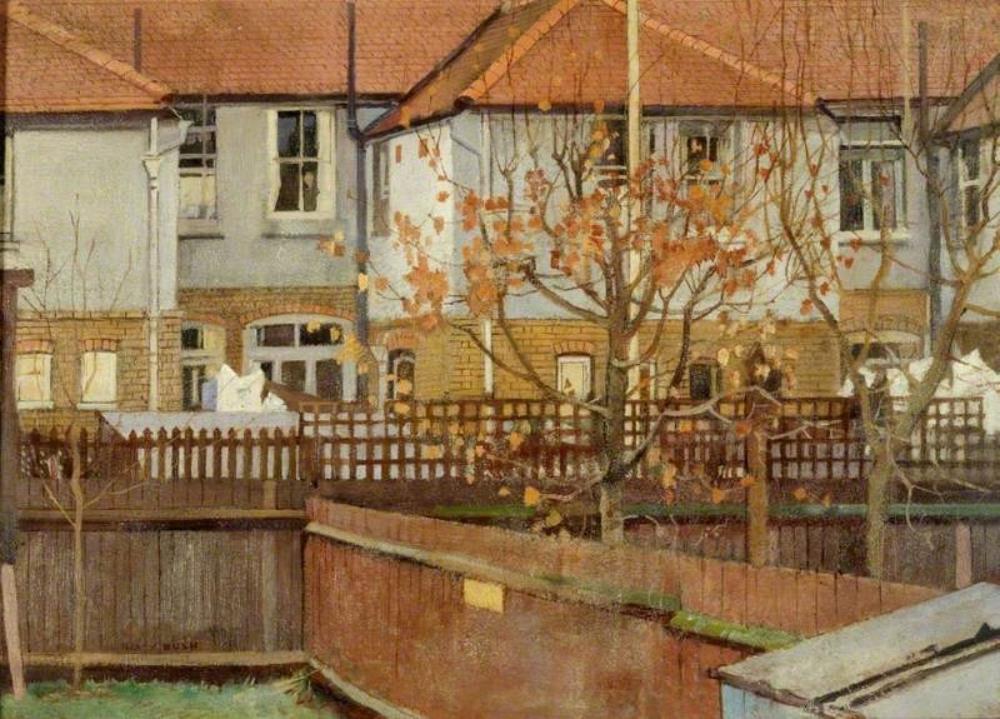
After he died, his daughter Janet and her husband lived in the house for almost 30 years and, after Janet’s death, Christie’s held a studio auction of 81 works by Harry. The location of most of these paintings is today unknown, including his best-known work, The Builders (1933), which was reproduced on the catalogue cover.

Bush greatly admired the Dutch masters, and The Tiled Kitchen (Museum of London), a 1954 portrait of Janet at his house, paid homage to them. The working drawing for this picture (also held by the Museum) reveals the meticulous composition that underpins his detailed rendering – even fish scraps for the cat are included. The value of Bush’s work lies precisely in raising the everyday to the level of art through understated composition and impeccable finish. His work presents suburbia, where he himself lived for the whole of his working life, unexceptionally yet with faithful detail and artistic coherence.

In Bombed House, Merton 1940 (Imperial War Museum) once-private domestic interiors are exposed by the blast, while denuded branches blend compositionally with pipework on exterior walls. Rhubarb flourishes regardless above the garden’s Anderson shelter: life goes on.
Bush’s work is a unique portrait of Merton, in peace and in war, over some 25 years. It is also a finely-wrought and absorbing portrait of humankind in that most human – and artistically neglected – of environments: the suburb itself. As one contemporary critic argued, his paintings ‘send one with new vision to the contemplation of the apparently commonplace amongst which so many of us pass our lives’.
Dr Peter Quartermaine
The 17th AA Coy North Queensferry

Interior of Barracks, 17 A. A. Coy, North Queensferry c.1940
Because the painting is dated c. 1940 I assumed that it was of a WWII anti-aircraft company.
It turned out that either the date is wrong, or the painting was created from memory or a sketch, because the scene dates from WWI.
I eventually tracked down some details of the 17th AA Company through the Great War Forum
https://www.greatwarforum.org/topic/190532-17th-aa-rga/?tab=comments#comment-3015894
Someone was looking for a soldier who served with the 17 AA Coy, and received this reply from Kevin Rowlinson:
“If you subscribe to ancestry you could view the records of 133304 Harry Bailey. It lists some of the places 17 Coy were at the start of 1917, although later he did go abroad and join an AA Section. 17 AA Coy together with 52 and 54 Coys covered the Forth/Edinburgh defences.”
I contacted Kevin and asked if he could help with the painting. Here is his reply:
“I would suggest it may have been painted in 1918, or from memory if 1940. You could have a look [on Ancestry.com] at the service records for a Harry Bush serving with the Royal Engineers, no. 366390, who was with 17 AA Coy being discharged from North Queensferry in Oct 1919. He was an electrician so probably worked with the searchlight section and any other electrical equipment that needed servicing/repairing. On attestation he gives his trade, or calling, as artist.”
Service Records of 133304 Harry Bailey.
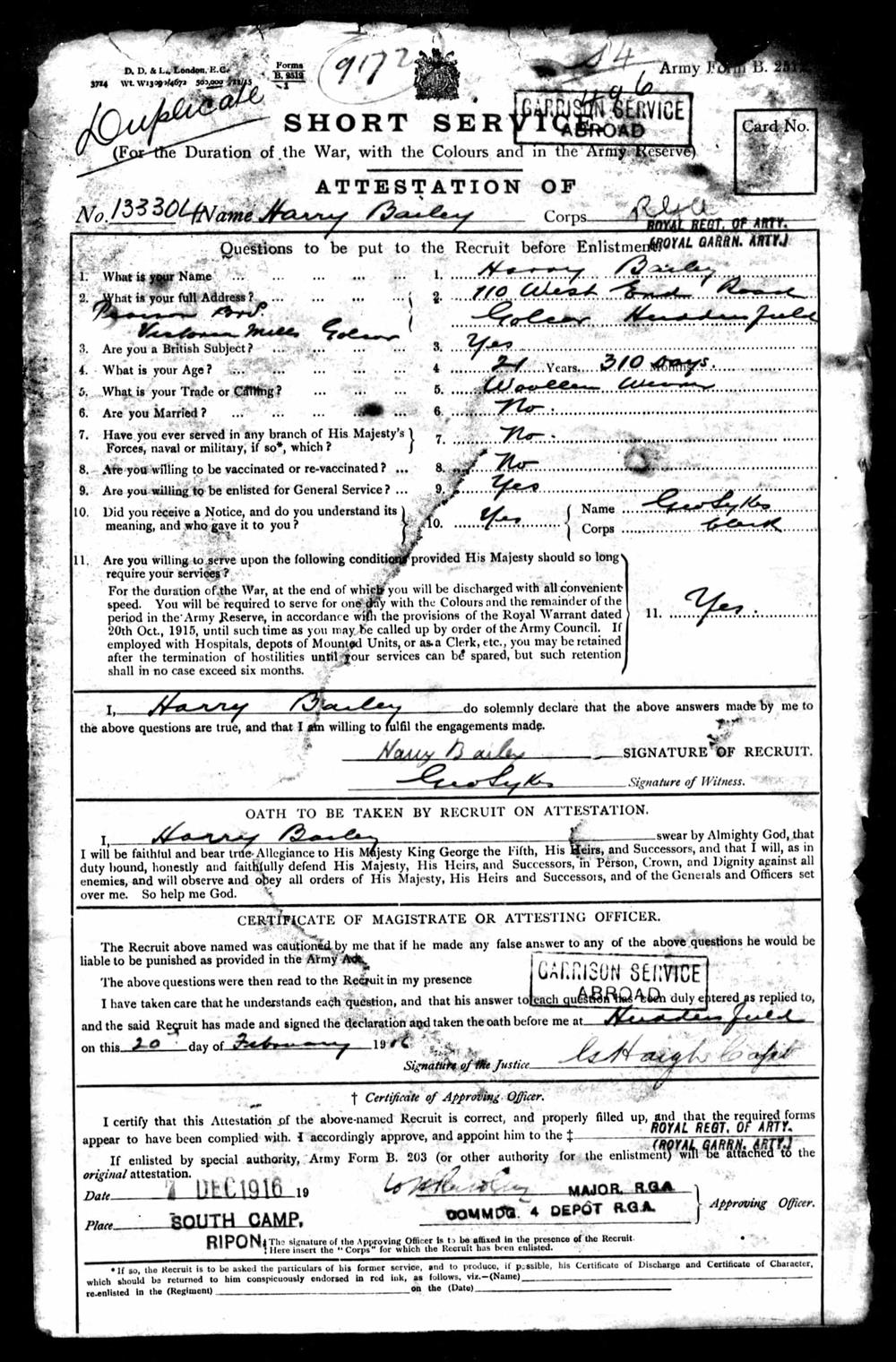 Harry Bailey was a Woolen Weaver from Golcar, Huddersfield. He signed up on 5th December 1916 at the age of 21, as an RGA (Royal Garrison Artillery) Gunner.
Harry Bailey was a Woolen Weaver from Golcar, Huddersfield. He signed up on 5th December 1916 at the age of 21, as an RGA (Royal Garrison Artillery) Gunner.
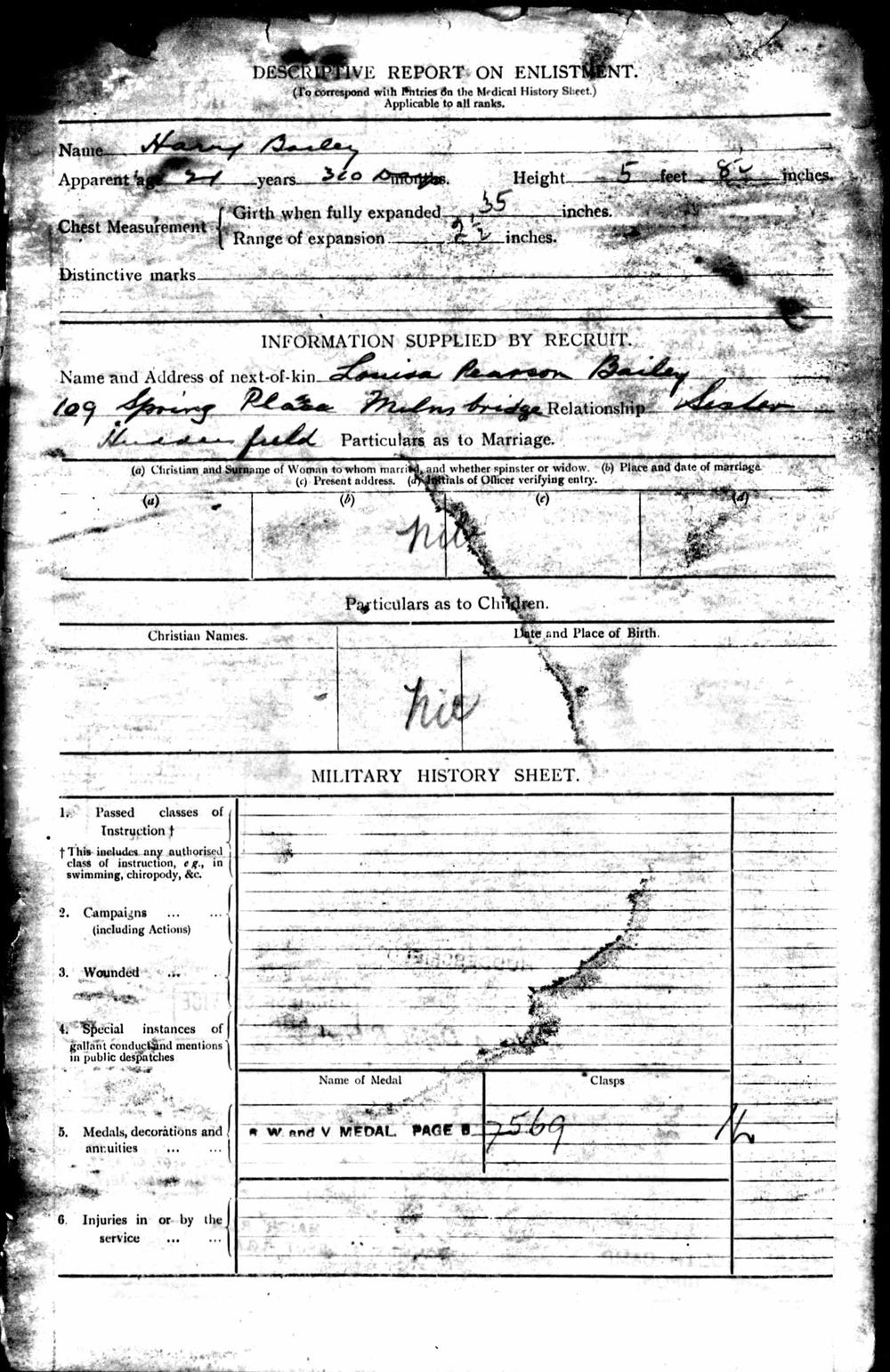
and was discharged on 21st January 1919

His medical records show that in September 1917 he was anaemic after losing a large quantity of blood following tooth extraction in August 1917. At that time he was serving on Inchcolm Island.

His service record shows that he served with 17 AA Co from January 1917 to September 1917 when he transferred briefly to 18 AA Co then back to 17 AA Co in October 1917.

This Casualty Form gives some more details:

On mobilization, he was posted to No4 Depot RGA South Camp, Ripon on 4th December 1916
4th January 1917 RGA AA Forth Defences
5th January 1917 ‘A’ s/s 17 AA Coy N. Queensferry
19th January 1917 ‘B’ s/s 17 AA Coy Hillock, Dunfermline
8th February 1917 ‘B’ s/s 17 AA Coy Inchcolm
9th September 1917 ‘B’ s/s 18 AA Coy Inchcolm
On 16th August 1918, he embarked for France to serve with various AA batteries.
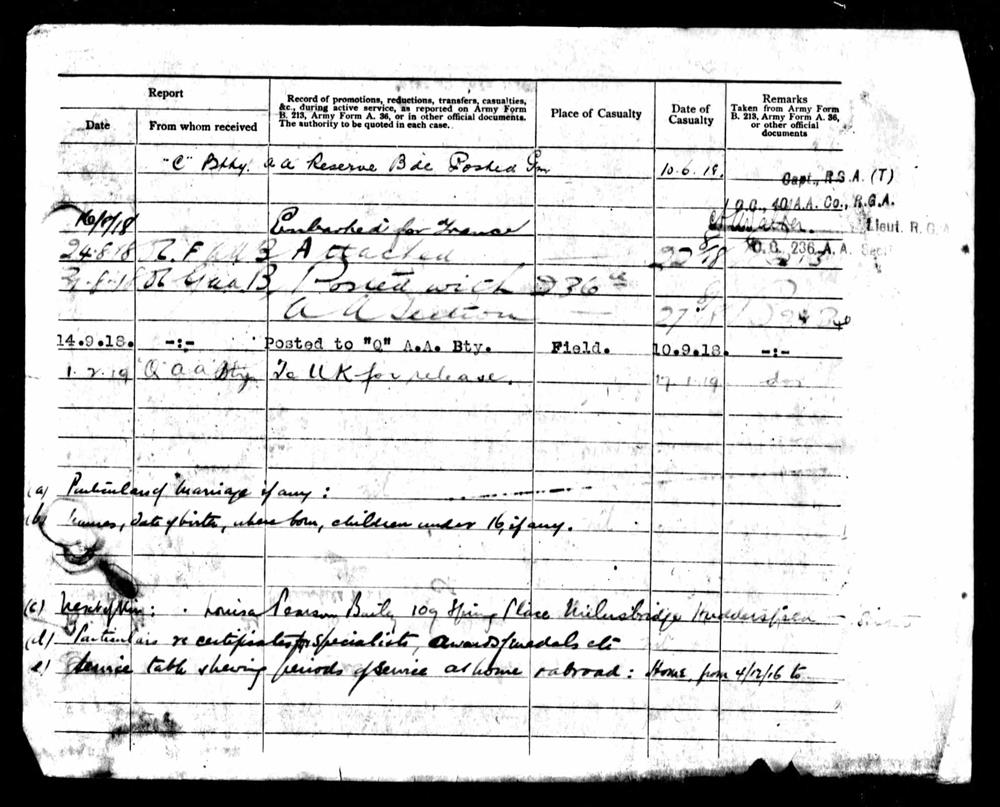
So thanks to Harry Bailey’s service records, we know that 17th AA Company was part of the Forth Defences, based at North Queensferry, with an outpost on Inchcolm.
The Artist in North Queensferry
Harry signed up on 10th August 1918 at Gosport.

It is definitely the right Harry Bush – his wife is Noel Laura Nisbet.
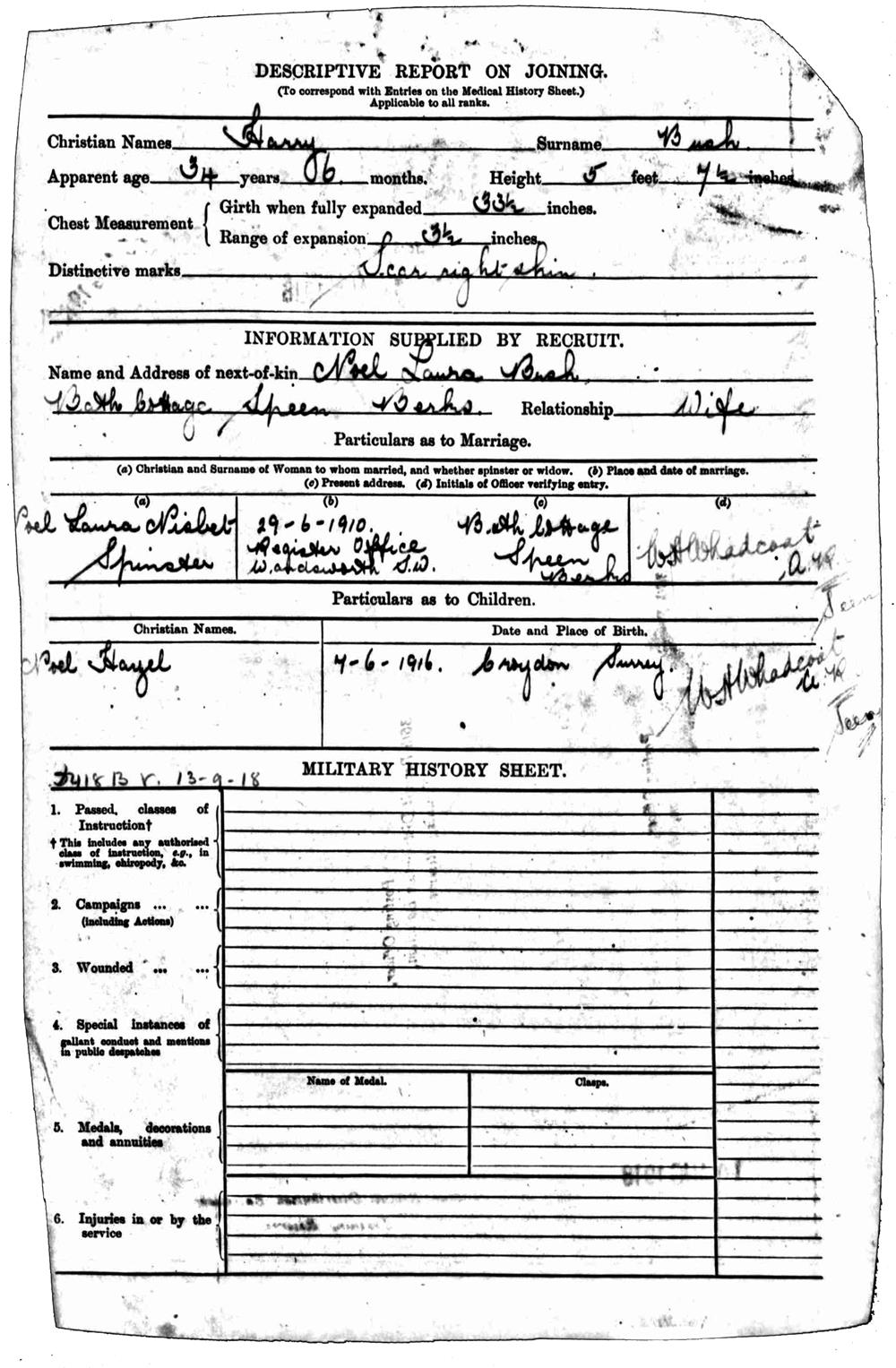
In November 1918, he is assigned to the Royal Engineers as a skilled Electrician.
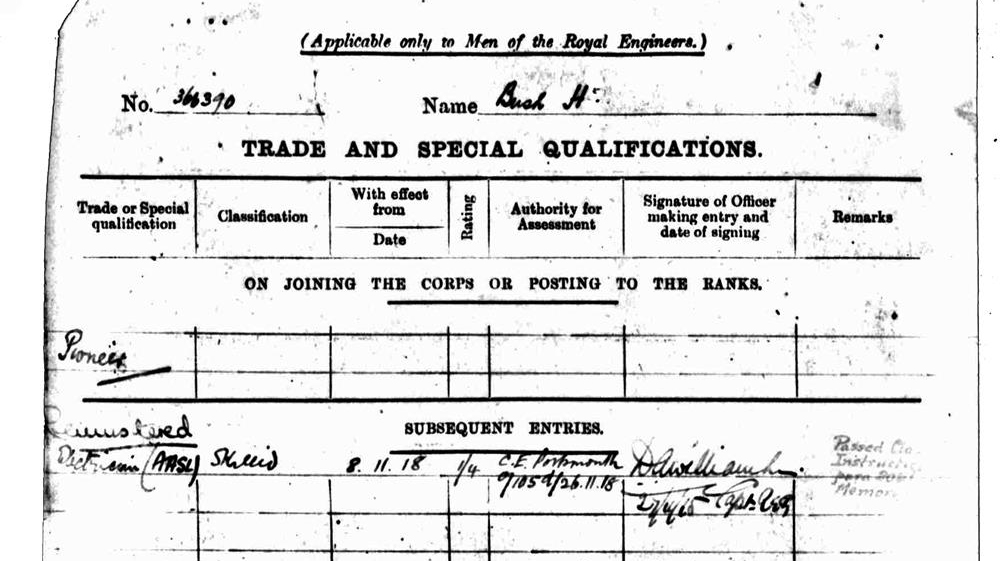
and attends a course on AA searchlight Work at RE School of Electric Lighting in Gosport. His report says he “lacks confidence but will improve with practice.”
Unsurprising for a raw recruit.

From Gosport, he was dispatched to join 17th AA Coy in North Queensferry, from where he was paid off in October 1919.
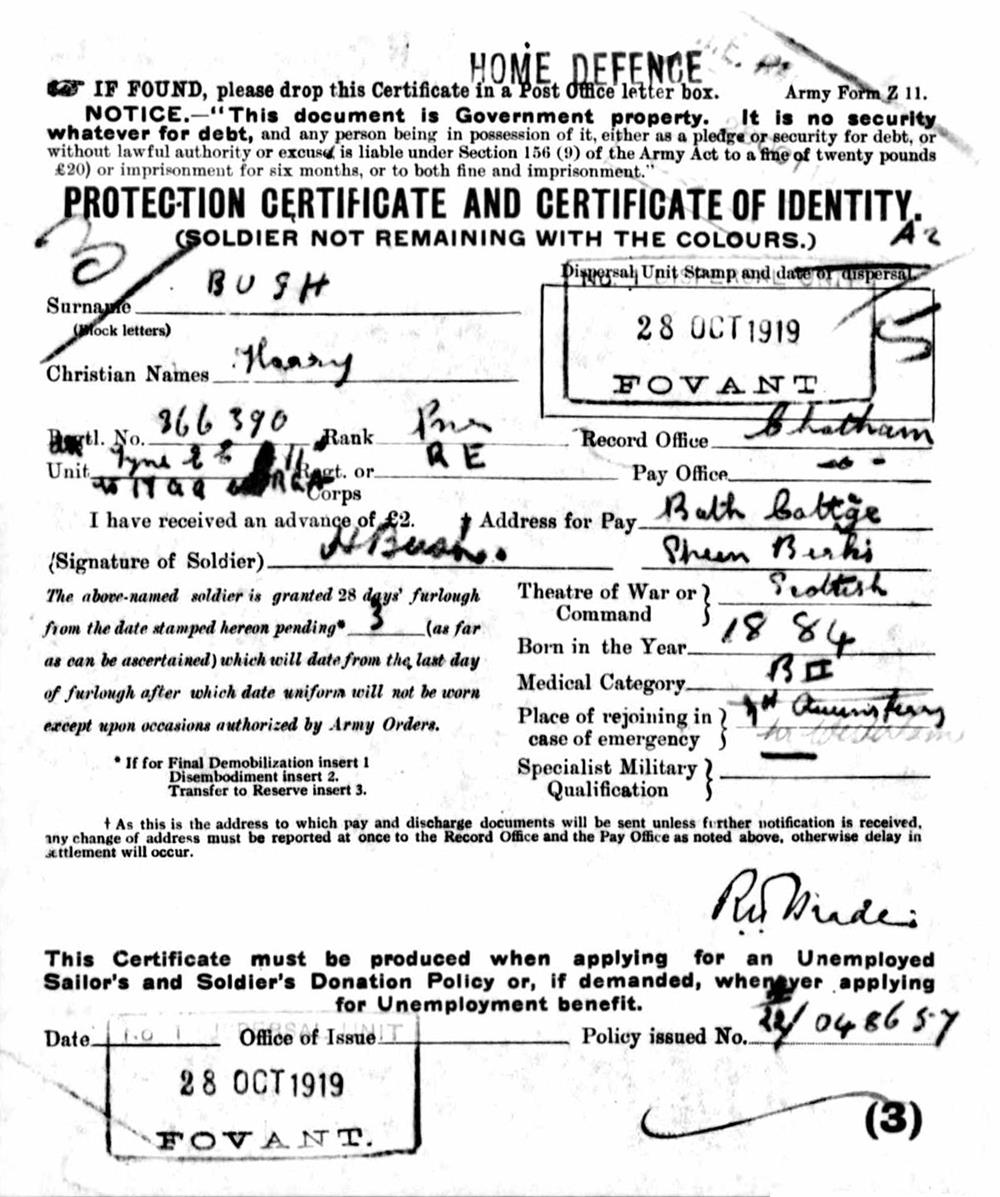
Circumstances of creating the painting
As all fighting had ceased with the signing of the Armistice in November 1918, Harry probably had a quiet few months in North Queensferry, where he either painted or sketched “Interior of Barracks 17 AA Coy., North Queensferry”

Location of the scene
The building was probably at Carlingnose Barracks. The Anti-Aircraft guns were portable units which could be moved around as required, so there is no physical evidence of any AA site. However the 17th AA Company was part of the Royal Engineers RGA – Royal Garrison Artillery – and they were the owners of Carlingnose Barracks.
The building appears to be made of wood. It was probably one of several wooden huts that were erected at Carlingnose and on Inchgarvie. These were sold in June 1920
Dundee Courier Saturday June 19, 1920


Alternatively it may have been at Ferrybarns. This advert from 1920 for the sale of buildings from the Ferrybarns Kite Balloon Station refers to Ferrybarns A.A. Station, and includes an officer’s hut.

So at the end of this detective story, we know whodunit, but we are still not sure of the location!
Update – November 2021
Pages 64 and 65 of “Fortifications of the Firth of Forth” by Gordon Barclay and Ron Morris cover the WWI Anti-aircraft defences of the Forth.
“In February 1915, the anti-aircraft gun defence of the Forth (at least that element of it under Army control) comprised two 6-pdr QF guns at Rosyth (one for the dockyard and one at the oil tanks) and two 1-pdr pom-pom guns on travelling carriages at the Armaments Depot at Crombie.
By 1 June 1917, the number of AA guns in the Forth had increased to 20 including – Ferry Hill (North Queensferry) – 3-inch (20cwt)“
So my money is on the location being Carlingnose rather than Ferry Barns.
top of page
